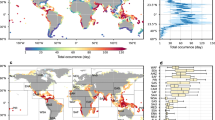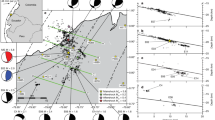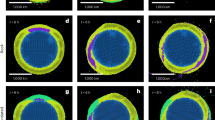Abstract
As part of a more general investigation of the structure and plate tectonics of the Scotia Sea early in 1972 a temporary seismographic station was installed at King Edward Point, the British Antarctic Survey station on South Georgia (see Fig. 1). The station (KEP) comprises a three-component set of short-period Willmore seismometers at position 54.28° S, 36.48° W, and two single channel (vertical) outstations with telemeter links to KEP; all five channels record on magnetic tape. Interest has been concentrated on a study of activity associated with the South Sandwich Islands subduction zone1.
This is a preview of subscription content, access via your institution
Access options
Subscribe to this journal
Receive 51 print issues and online access
$199.00 per year
only $3.90 per issue
Buy this article
- Purchase on Springer Link
- Instant access to full article PDF
Prices may be subject to local taxes which are calculated during checkout
Similar content being viewed by others
References
Santo, T., Bull. Earthq. Res. Inst. Tokyo Univ., 48, 1089–1105 (1970).
Douglas, A., Nature, 215, 47–48 (1967).
Lilwall, R., and Douglas, A., Geophys. J. R. astr. Soc., 19, 165–181 (1970).
Karig, D., J. geophys. Res., 76, 2542–2561 (1971).
Barazangi, M., and Isacks, B., J. geophys. Res., 76, 8493–8516 (1971).
Aggarwal, Y., Barazangi, M., and Isacks, B., J. geophys. Res., 77, 6427–6434 (1972).
Barker, P. F., Earth planet. Sci. Lett., 15, 123–132 (1972).
Author information
Authors and Affiliations
Rights and permissions
About this article
Cite this article
BRETT, C., GRIFFITHS, D. Seismic wave attenuation and velocity anomalies in the eastern Scotia Sea. Nature 253, 613–614 (1975). https://doi.org/10.1038/253613a0
Received:
Published:
Issue Date:
DOI: https://doi.org/10.1038/253613a0
Comments
By submitting a comment you agree to abide by our Terms and Community Guidelines. If you find something abusive or that does not comply with our terms or guidelines please flag it as inappropriate.



